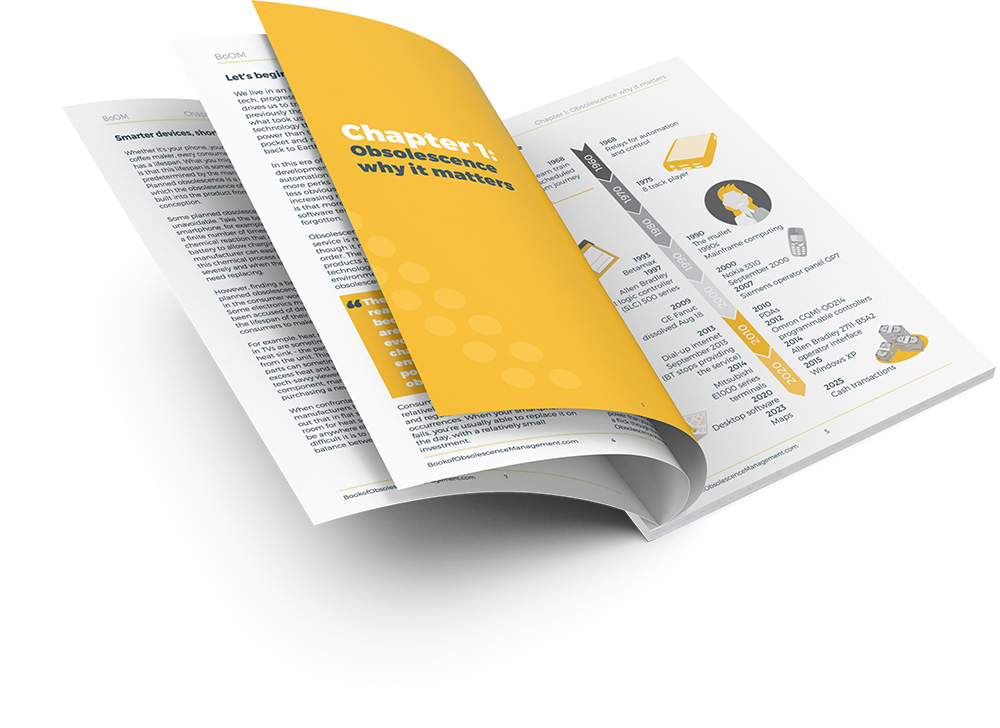4.0 Sight
Digital industry around the world

We decided to write this book to serve as a roadmap for the pioneering initiatives and cutting-edge technologies changing the world. Delve into 4.0 Sight where you'll gain insights from experts that hail from a mix of industries and find our predictions on how the technological landscape will change in the coming years.
This book charts the digital journey for manufacturing industries in various countries around the world, looking at the key trends and challenges they face and what they're doing to embrace the future of advanced manufacturing.


Listen to a preview

Develop your knowledge and skillset at your own leisure by listening to the audiobook version.
Why a book on Industry 4.0?
Consumer tastes are changing, product lifecycles are getting shorter and there are now more technologies than you can shake a stick at.
We curated 4.0 Sight to help automation professionals avoid information overload and make sense of key trends and challenges in manufacturing such as artificial intelligence, additive manufacturing and cloud analytics.
What's inside?
-
Chapter 1:
From Industry 4.0 to Society 5.0 >
Chapter 1:
From Industry 4.0 to Society 5.0
Technologies such as additive manufacturing, collaborative robotics, artificial intelligence (AI), predictive analytics, and virtual and augmented reality are set to disrupt, challenge and fundamentally change the way human beings work and communicate.
-
Chapter 2:
A modern revolution is born >
Chapter 2:
A modern revolution is born
In many ways, it was a trade fair like any other. Except it wasn't. It was Hannover Messe; the world's largest exhibition of industrial technologies. As well as being home to thousands of stands exhibiting the latest and greatest developments in areas such as automation, controls, power and renewable energy, the trade show is also an opportunity to launch new concepts and initiatives.
-
Chapter 3:
The latest trends in automation >
Chapter 3:
The latest trends in automation
Neil Mead is the editorial director at Datateam Business Media, a modern and dynamic publishing business based in the UK with a comprehensive product portfolio of leading magazines, websites and events across multiple business-to-business sectors. This includes a dozen titles covering different aspects of engineering and manufacturing.
-
Chapter 4:
The home of the industrial Revolution gets productive >
Chapter 4:
The home of the industrial Revolution gets productive
To boost the economy, the UK Government has created its Industrial Strategy to promote growth of future technologies and stimulate the economy. The strategy outlines four ‘Grand Challenges’ where Britain can lead the global technological revolution: artificial intelligence and big data; clean growth; the future of mobility; and meeting the needs of an ageing society.
-
Chapter 5:
A pan-EU tour of Europe >
Chapter 5:
A pan-EU tour of Europe
The European Commission’s Digital Economy and Society Index (DESI) 2018 is one of the leading measures of the progress that EU countries are making towards the digital economy. It looks at five areas: broadband connectivity, human capital and skills, how citizens are using the internet and the extent to which companies have integrated digital technology into their businesses.
-
Chapter 6:
The smart revolution >
Chapter 6:
The smart revolution
We interview Steve Ward, an Application Engineer (AE) Director at GE’s Automation & Controls division, which forms part of GE Power. In addition to maintaining and supporting the core business in EMEA, Steve is working on the launch of new automation and controls products, growing sales by 30 per cent, including in equipment such as variable frequency drives (VFDs), safety control systems, outcome optimising controllers including Linux controllers and new industrial PCs and displays.
-
Chapter 7:
The big nine >
Chapter 7:
The big nine
Although most businesses agree that technology will change the industrial sector in the coming years, many have been reluctant to adopt digital technologies. According to the EU Commission's Digital Transformation Survey, fewer than 35 per cent of respondents have adopted at least two of the nine key technologies.
-
Chapter 8:
A Swedish success story >
Chapter 8:
A Swedish success story
We interview Tobias Antius, CEO and managing director of Swedish industrial IT and automation specialist Novotek AB. For the last ten years he has been head of Novotek group, with the aim of positioning the company to support its customers on their digital journey.
-
Chapter 9:
Going from a crisis to a competition >
Chapter 9:
Going from a crisis to a competition
The manufacturing crisis has been attributed to a variety of causes, from an annual trade deficit, a reliance on outsourcing and the growth of domestic industries such as finance, construction, real estate and services. However, probably the biggest reason for many is China’s meteoric rise following its entry into the World Trade Organisation (WTO) in 2001, which MIT economists have directly attributed to the loss of 560,000 American jobs.
-
Chapter 10:
My taste buds are tingling >
Chapter 10:
My taste buds are tingling
We interview Todd Gilliam, US food and beverage segment leader for ABB. ABB is a technology leader in electrification products, robotics and motion, industrial automation and power grids, serving customers in utilities and industry, as well as transport and infrastructure globally. ABB operates in more than 100 countries with about 147,000 employees and reported a revenue of $34.3bn in 2017.
-
Chapter 11:
Going beyond industry with society 5.0 >
Chapter 11:
Going beyond industry with society 5.0
We interview Nigel Smith, CEO of TM Robotics, the exclusive distributor of Toshiba Machine for Europe, the Middle East and Africa (EMEA), as well as North and South America. As an engineering company based in Japan, Toshiba Machine is part of the national movement to use technology to enhance society beyond the scope of the factory floor. This vision, in the form of Society 5.0, may prompt companies around the world to reconsider the way they innovate and our relationship with technology in the future.
-
Chapter 12:
The rise of China >
Chapter 12:
The rise of China
Today, the Chinese economy is still heavily restricted by Government interventions. However, since the 1970s China has made a concerted effort to reform its economy, going from a closed, centralised system to a market-oriented one. Its move from a low-cost economy to a value added one has seen a shift away from agriculture to industry.
-
Chapter 13:
The workforce of the future >
Chapter 13:
The workforce of the future
We interview two engineers from Renishaw. Beyang Arrey is a software engineer and Laura Brown is a mechanical engineer in Research & Development at Renishaw’s Additive Manufacturing Products Division (AMPD). Renishaw is a world leading engineering technologies company, supplying products used for applications as diverse as jet engine and wind turbine manufacture, through to dentistry and brain surgery.
-
Chapter 14:
Using obsolescence to your advantage >
Chapter 14:
Using obsolescence to your advantage
As consumers we’ve come to expect devices like our smartphones to be updated every year. This is having a knock-on effect on industrial product lifecycles too, which are becoming shorter and shorter. While this seems good in the short term — after all, who doesn’t want their equipment to be fitted with the latest features?
-
Chapter 15:
Future foresight >
Chapter 15:
Future foresight
Jon Wilkins is marketing director of EU Automation and one of the most prolific writers on industrial automation. He is a professional brand advocate and commercial marketing strategist, who has been part of the EU Automation team since its humble beginnings. Here, he looks at the industrial automation trends and technologies that will become a reality in the coming years.
BoOM
The Book of Obsolescence Management explores how the industry can use obsolescence to its advantage.
Join over 17,000 BoOM readers and find out how we are aiming to help consumers, manufacturers and suppliers better understand the process of obsolescence and how it effects all industries and sectors worldwide.





